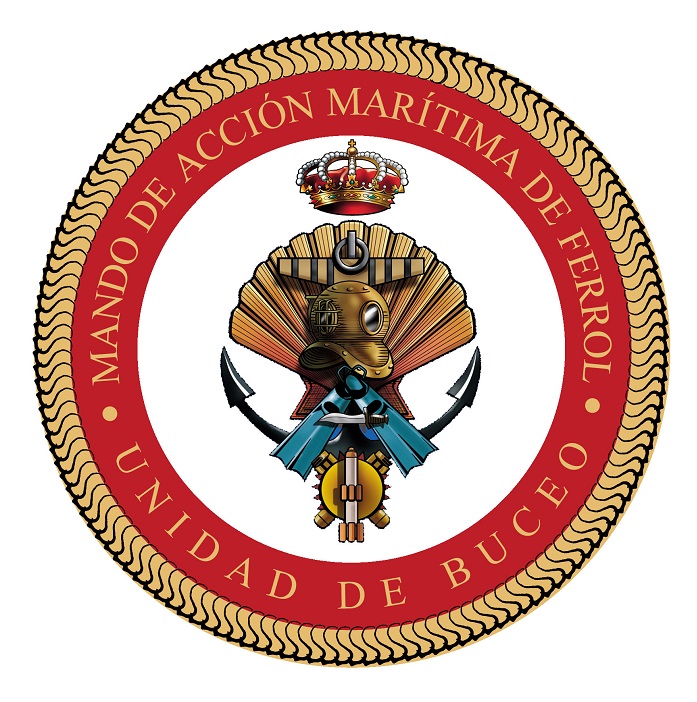Ferrol Diving Unit
Ferrol Diving Unit
This brief review will explain the main tasks, missions, capabilities, structure and history of this diving unit.
The Ferrol Diving Unit is an operational group mainly devoted to activities related to the maintenance and repairing of Spanish Navy warships in the Ferrol Naval Station and the disposal of explosives (EOD) in Galician waters.
In June 1762, Roqie Fábregas became the first diver in Ferrol but it was not until July 1847 that the first diving equipment (Siebe-Gorman model) arrived at the station on board the merchant frigate ‘Jorge Juan’.
The first diving unit as such was set up in July 1904 with 12 fully-equipped scuba divers.
This diving group belongs to the series of operational units that make up the Maritime Action Force.
Its main missions include:
Protection and defense of warships, docks and port facilities against possible sabotage, terrorist or dangerous actions conducted under the waters of the Ferrol area.
The same situation in the case of national or foreign merchant ships if the naval authorities order it.
Pinpoint, reconnoiter, neutralize and dispose of underwater explosive devices or explosive devices found in beaches and coasts.
Cooperate with Mine Countermeasures (MCM) units in the missions entrusted.
Repairing works in ships’ breakdowns or rescue operations.
Collaborate in SAR tasks.
Conduct protection tasks in underwater archaeological heritage sites, locating and registering all historical wreckages.
In addition to these tasks, the Unit collaborates with Maritime Action ships distributing and maintaining diving equipment as well as training other divers.
In order to fulfill all the different missions and activities, the Unit has a workforce of 19 highly qualified servicemen. There are specialists in diving, scuba diving, combat divers, MCM divers, EOD specialists, SAR divers and an expert nurse in case of diving accidents.
The materiel includes different types of equipment like individual scuba systems, surface diving support equipment, semi-rigid and rigid craft as well as several vehicles.
It has two hyperbaric chambers; one in the unit’s facilities and another portable.
An important aspect of our daily activities is the physical exercise. Diving is a very demanding endeavor that requires constant training and a good physical condition.
Also important is the perfect condition of all the equipment including underwater tools, diving suits, compressors, hyperbaric chambers, craft and boats. Training with other divers from other military areas is also conducted on a regular basis, normally twice a week.
Apart from the inspection of the underwater part of the hulls (draft) in northern Spain ports, other tasks include repairs afloat such as underwater cutting and welding for the placement of anodes or repair of grids, location, refloating and recovery of anchors of different tonnage; the unit has participated in collaborations with the Galician Regional Government and civilian organizations in the protection of the Underwater Archaeological Heritage, highlighting the following:
RAGAZZONA project off the Ferrol estuary (A wreckage of gun galley from the Spanish Armada).
A 16th century wreckage of the galley ‘San Giacomo di Galizia’.
Frigate ‘Santa María Magdalena’ off Viveiro.
Project to recover several bronze guns in Camariñas.
On the other hand, the unit has an EOD team to intervene in the inspection of civilian docks outside military arsenals when a military vessel calls at that port, and in cases where an explosive device is detected in the underwater environment that may affect civilian and military security. In addition to all this, the unit's deactivation personnel have participated in international missions such as EUFOR in Bosnia-Herzegovina, operation LIBRE HIDALGO in Lebanon, operation ALTHEA in Bosnia-Herzegovina. It is worth mentioning the actual intervention on a drifting mine north of Finisterre.




 + 7
+ 7







